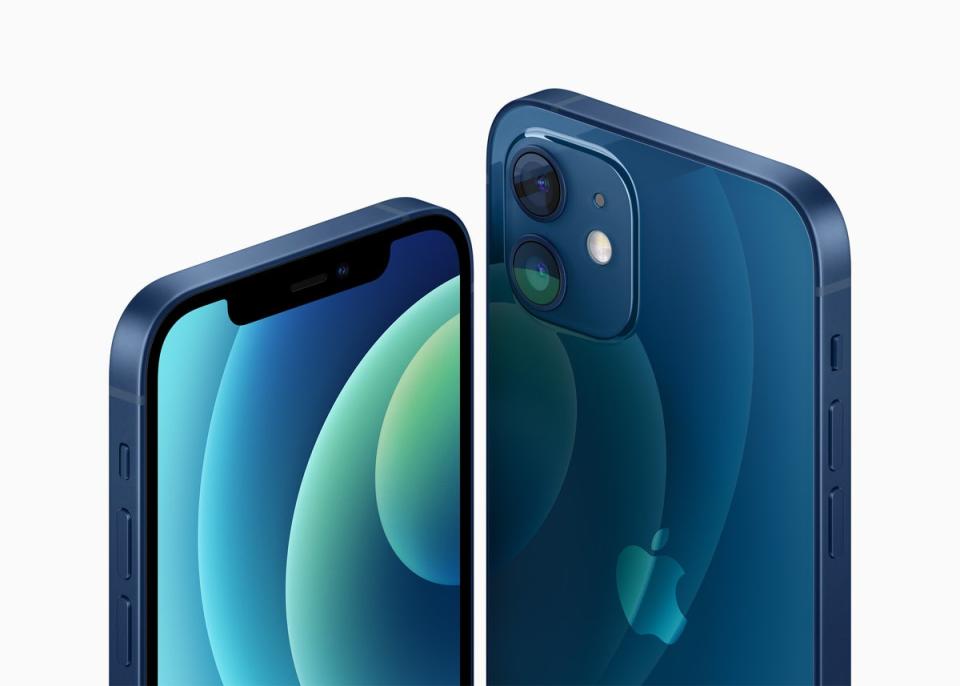Apple iPhone 12 Pro Max: what deals are available in January 2023?

Out of the four new iPhone 12 models released in autumn 2020, the iPhone 12 Pro Max is the biggest and heaviest option. It has a long battery life, advanced camera performance and is also the most expensive in the range.
So, if you’re itching to get your hands on one, what type of deal should you go for? We take a look at the best options…
iPhone 12 Pro Max tech and specs
The iPhone 12 Pro Max is Apple’s premium smartphone, offering all of its latest technology and highest specs.
Its Super Retina XDR display is a 6.7” OLED panel with a pixel density of 458 pixels per inch (PPI) and a refresh rate of 60Hz. All told, it produces a very crisp image, if not quite as smooth as some of its 120Hz Android counterparts.
Each of its four camera lenses (three on the back, one on the front) take pictures at 12 megapixel (MP) resolution. This looks meagre when compared to the 108MP and 50MP lenses from Samsung and others, but it’s what Apple’s software does with those megapixels that count - producing photographs to rival any other manufacturer’s.
LiDAR scanning technology also boosts night time shots and helps to add depth to your photographs. In terms of video, the handset allows you to shoot in 4K ultra-HD resolution in up to 60 frames per second (FPS).
The brains of the handset is Apple A14 Bionic chipset, a six-core set-up featuring two 3.1 GHz Firestorm cores and four 1.8 GHz Icestorm cores. The Pro Max comes with 6GB of RAM and a choice of either 128GB, 256GB or 512GB internal memory.
Speaking of choices, the phone is available in silver, graphite, gold or Pacific Blue. Every version has an IP68 rating for water and dust resistance, which means it’ll survive being submerged in up to 6m of water for 30 minutes.
Its battery is a 3687 mAh cell that you can quick-charge to 50% in 30 minutes. Wireless charging is also available via Apple’s MagSafe accessories.
Pay upfront and get a SIM-only deal
At around £1,099, the iPhone 12 Pro Max does not come cheap. It pays to research your options carefully.
One of the most cost-effective ways to pay for a new handset is to buy the phone outright and take advantage of a SIM-only deal.
If you don’t have enough savings to pay for the handset upfront, or you’d rather not use them, you can save money by spreading the cost with a 0% purchase credit card.
This type of plastic will enable you to buy the handset upfront and then pay off the amount spent in monthly instalments, with zero interest added. Interest-free offers typically last several months, but it’s important to calculate exactly how much you’ll need to repay each month in order to clear your balance before the 0% deal ends.
For example, if you spend £1,099 buying the handset and your credit card offers 0% for 20 months, you’ll need to make a monthly payment of £55 to ensure you’ve paid back the full amount owed before the 0% window ends and interest kicks in (£1,099 divided by 20).
Note that you may get a cheaper deal on your handset if you have an existing iPhone to trade in.
Once you’ve bought your handset, you’ll need to hunt out the most appropriate SIM-only deal. This will give you a monthly allowance of calls, texts and data for a set price and often works out to be good value for money.
What’s more, many SIM-only deals operate on a 30-day rolling basis, giving you the opportunity to chop or change your plan without penalty. Alternatively, you can choose between 12-month and 24-month plans.
You can compare a full range of SIM-only deals via this link.
Spread the cost by paying monthly
Another option is to choose a ‘pay monthly’ contract, where the cost of the handset, plus a specified amount of data, texts and minutes are all packaged up for a fixed monthly payment.
If you decide to go down this route, you’ll need to consider how long you’re happy to tie in for. Most pay monthly contracts are typically between 12 and 24 months, but many iPhone 12 deals require you to lock in for as long as 36 months. Longer contracts usually offer more competitive prices, but less flexibility.
Should you need to get out of your contract early, you’ll need to pay a penalty which can be the equivalent of the amount you would have paid had the contract continued. Be sure to factor this in before you apply.
You can compare a full range of monthly contract deals here.
How do the costs compare?
On average you’re looking to pay around £50 a month with a pay-monthly contract over the course of three years, which works out to be £1,800 in total.
SIM-only deals for example, can start from as little as £7 a month. If you were to pay this amount for three years, the total cost would be £252. Adding on, say, £1,099 for the handset, the overall cost would come to £1,351.
Even with a SIM-only deal of £20 a month, your total cost over three years would still be cheaper at £1,819 – plus your data allowance would be significantly higher and you wouldn’t be locked into a lengthy contract.
This means that buying a handset outright and using a SIM-only deal generally works out to be the cheapest option. But this will partly depend on how much data you require and how long you’re happy to be tied in for, so always run several comparisons to be sure.

 Yahoo Finance
Yahoo Finance 